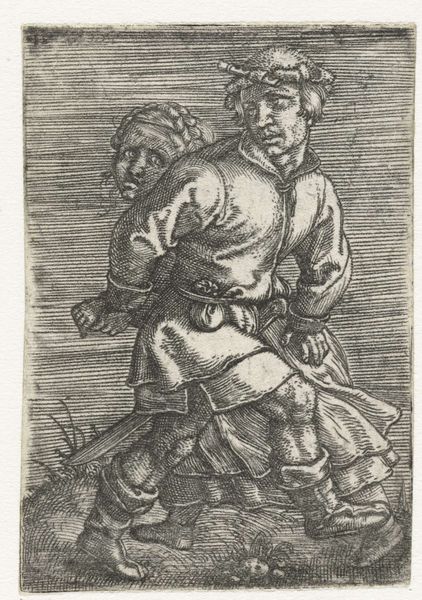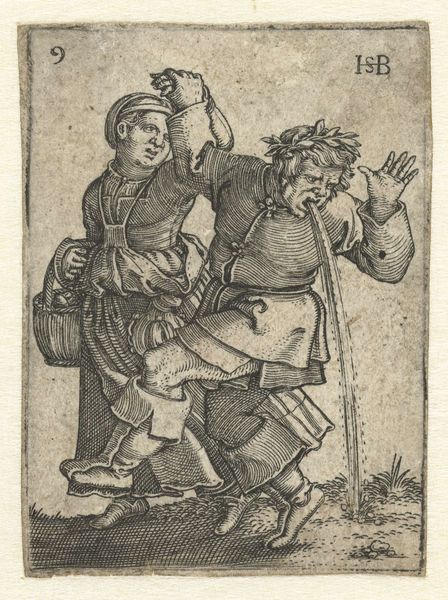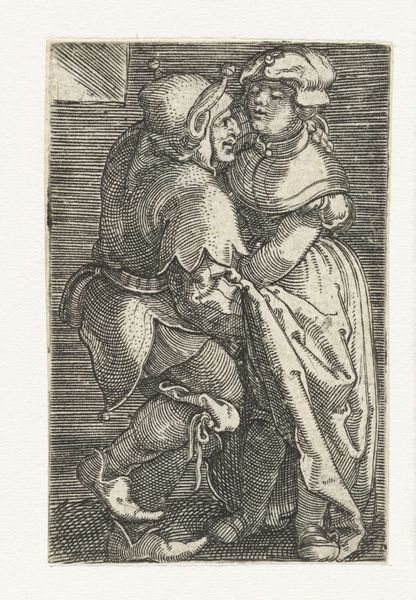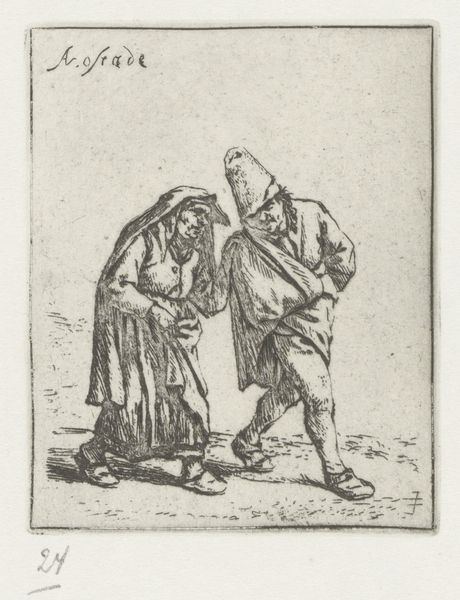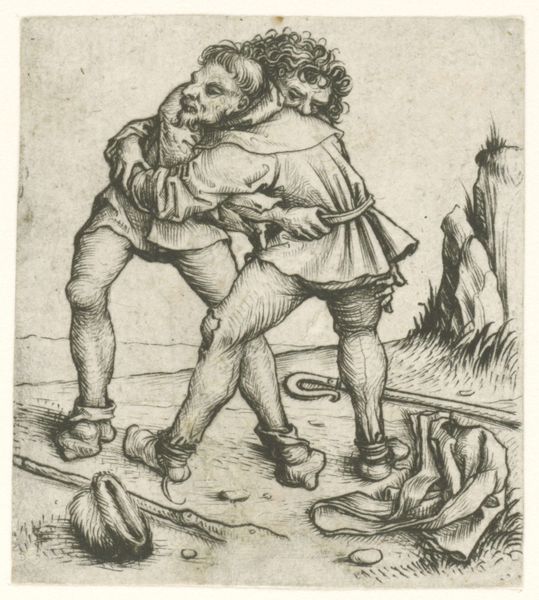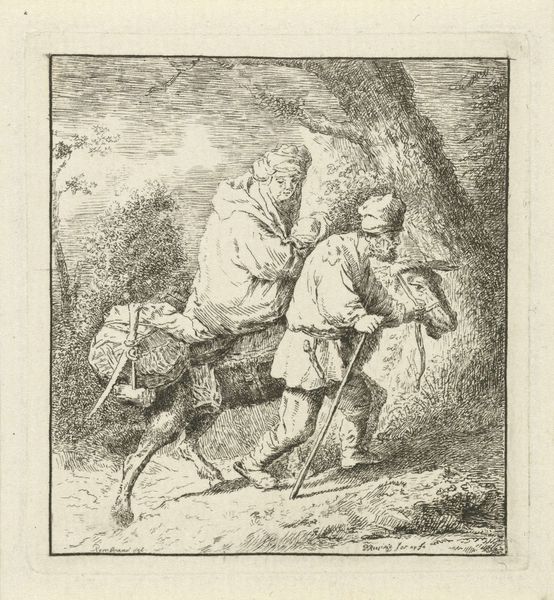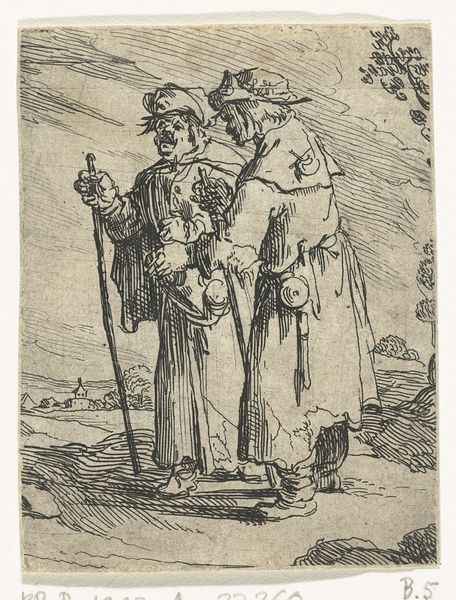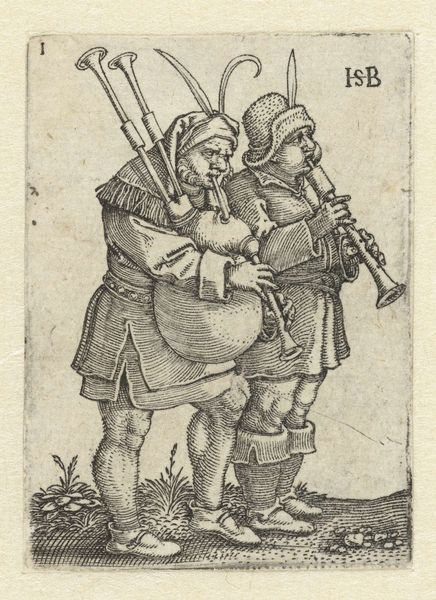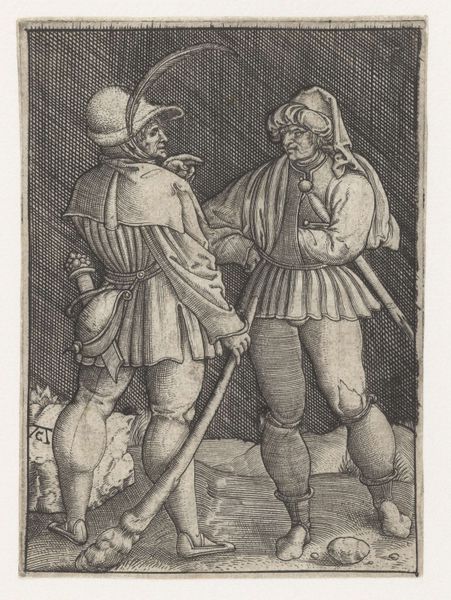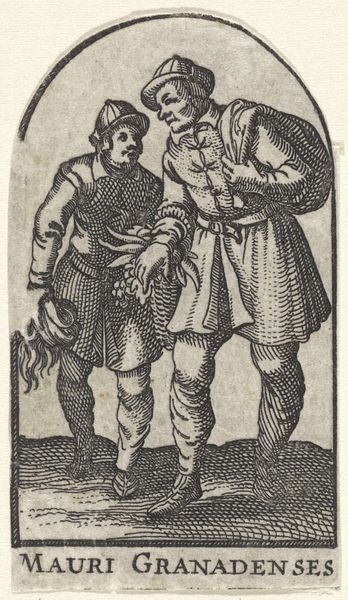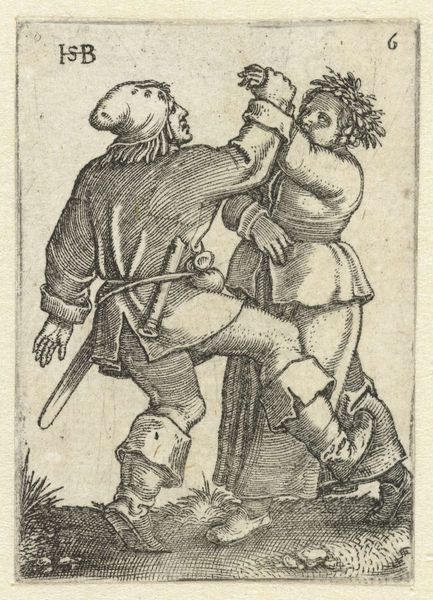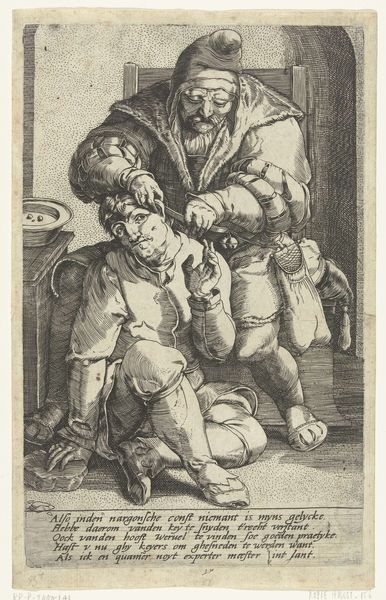
drawing, print, paper, engraving
#
drawing
#
amateur sketch
#
toned paper
#
light pencil work
#
germany
# print
#
pen sketch
#
pencil sketch
#
paper
#
personal sketchbook
#
ink drawing experimentation
#
pen-ink sketch
#
sketchbook drawing
#
sketchbook art
#
engraving
Dimensions: 56 × 39 mm (image/plate/sheet)
Copyright: Public Domain
Editor: This is "Peasant Couple Dancing" by Barthel Beham, made in 1524. It's an engraving, so a print, on paper, and it's currently housed at the Art Institute of Chicago. There's something sort of grim about it despite the title. What catches your eye when you look at it? Curator: As a materialist, my attention is immediately drawn to the means of its production. This isn’t some grand oil painting commissioned by a wealthy patron; it's a print, inherently reproducible, bringing art to a potentially wider audience. Consider the implications of that! The engraving process itself – the labor of cutting into the metal, the pressure required to create the print – speaks to a democratization of image-making. Editor: That's interesting. So you're saying it's more about how it was made and distributed than about the couple? Curator: Precisely! Think about the social context: early 16th-century Germany. Who is consuming this image? Is it a commentary on peasant life intended for other peasants, or is it directed at a more affluent class? The material – paper, ink – their cost and availability, these are key to understanding the print's purpose. Editor: I guess I hadn’t thought about it that way. It just looked like…a picture of peasants! Curator: And it *is*, ostensibly. But to truly understand it, we need to consider it as an *object* – made in a specific time and place, with particular materials, for a specific, even if now obscured, purpose and audience. We should ask whose labor made this accessible. Editor: So it's not just about *what* it depicts but *how* and *why* it could even exist in the first place. It recontextualizes the subjects of the artwork, giving the viewer a different interpretation and appreciation for the work. Curator: Exactly! By examining the materiality, we peel back the layers of social and economic context.
Comments
No comments
Be the first to comment and join the conversation on the ultimate creative platform.
